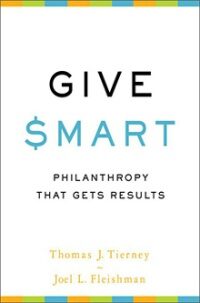It’s time to turn in my monthly blog to the Dodge Foundation and I’m horribly torn about what to talk about. I want to share with folks some of what we’ve been learning as part of our work to inform and help coordinate funders in their Hurricane Sandy relief, recovery and rebuilding efforts. I also want to talk about the amazing keynote presentation that Tom Tierney of The Bridgespan Group gave at the Council of New Jersey Grantmaker’s annual meeting last week. His topic was the Nonprofit Starvation Cycle and Avoiding the Donor-Grantee Trap.
But then it occurred to me that there is an important correlation here. There is a line that connects some of what we’ve been learning in the post-Hurricane Sandy recovery work with Tom’s remarks so here it goes…
Relief, Recovery, Rebuild
Nonprofits are an absolutely necessary resource when disasters like Hurricane Sandy hit. If you think of the process – the predicted 10 year process – it breaks down into three stages: relief, recovery, rebuild. Nonprofit organizations have been on the front lines providing that relief. They will also be integral to the intermediate recovery stage and essential to a thoughtful rebuilding process. From the big kahunas like the American Red Cross to the small, neighborhood-based groups like Project Paul in Keansburg and the St Francis Center on LBI, or the long term planners like New Jersey Future, we rely on them. We need them to have managed their organizations so that they can respond to extraordinary events like Hurricane Sandy.
The Challenges of Being a Nonprofit
But what does this mean? It means having adequate staff that is not so burned out (because they’ve been horribly understaffed) before disaster strikes, that they don’t collapse under the new pressure. It means not being so undercapitalized year after year, that the group doesn’t have the technology and other resources needed to do its regular work effectively – let alone now. It means having the ability – the time, energy & focus—to strategically think about what capacity is needed for the organization to be effective and sustainable when disaster does strike. Money to strategize and even dream is nearly impossible to attain but it allows the luxury of exhaling once in while to consider the bigger picture of how an organization will be called on to respond. I keep thinking about the fact that Ocean County did not have a VOAD chapter (Volunteer Organizations Active in Disasters) in place before Sandy hit. My bet? Part of this was a capacity issue. Nonprofits couldn’t afford the time away from their high demand, day-to-day work to organize and participate when there wasn’t an emergency.
Why Flexible Capital Matters
If we as a society are going to rely on nonprofit organizations to provide the relief, recovery and rebuilding support, we must think long-term for the good of our society and invest in their capacity. They are the expertise on the ground. We need to provide them with the flexible capital they clearly need to ensure they can meet the needs of their clients and communities before a storm, during a storm and long after a storm.
In the coming months and years there will be enormous challenges for our communities and enormous opportunities for nonprofits and funders alike. We will see truly innovative ideas put into action that have the potential to be scaled up and modeled by others. We will see highly creative people lead others in making our communities thrive again. Foundations can and should be the “private equity” behind these people and this work. Our society depends on it.
Nina Stack is President of the Council of New Jersey Grantmakers, the statewide association of more than 120 funding organizations working in New Jersey. She also serves as Chair of the Forum of Regional Association of Grantmakers, a 33-member network serving more than 4,000 foundations, corporations and other donors across the country.
